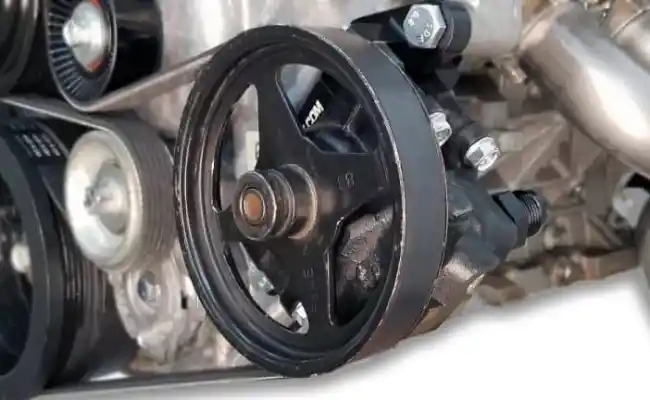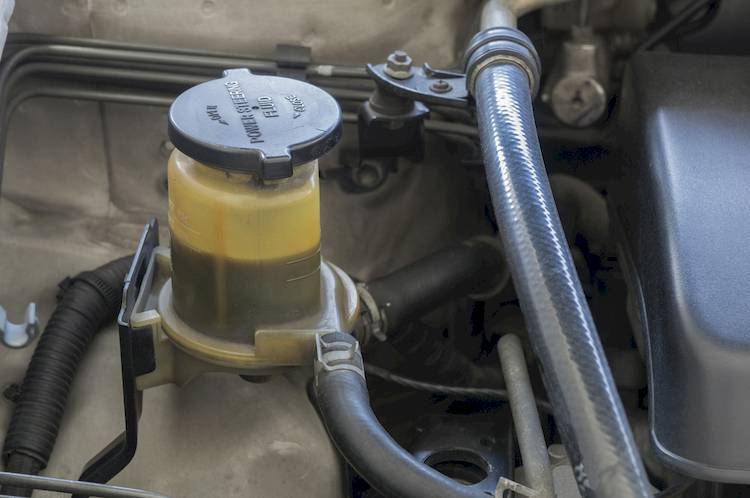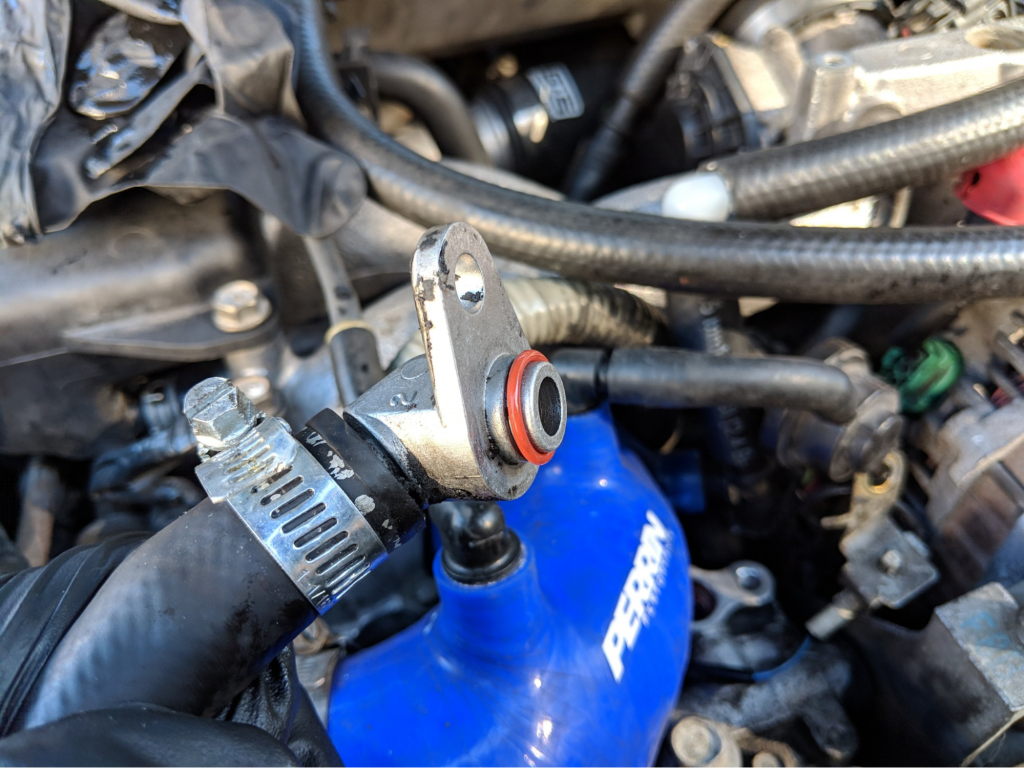You know what’s annoying? When you are driving your car peacefully and then you hear a weird noise from your power steering. But trust me it’s not a big deal to solve.
But why do you get power steering noise when cold?
Power steering noise can defer from different models of cars. But there can be some common reasons as well. There can be problems with squealing serpentine belts. Also, problems with power steering fluid are the most common. Air in the power steering system can also cause weird noise.
But there’s no need to worry! These issues can be fixed easily. I’ve mentioned all of the tips and tricks to fix these issues along with the explanation of the problems.
So, now let’s check out how we can fix these problems for you!
Power Steering Noise: 3 Probable Reasons & Fixes!
Understanding why your power steering gets noisy in the first place is important. Which can assist you in determining how to resolve the issue.
When anything goes wrong with your power steering, it creates a particular noise due to its unique architecture.
Bleats, hisses, and shrieks from your power steering system are common in cold weather. If your car squeals when it’s cold outside, it’s possible that the power steering is broken. Fortunately, the majority of these concerns are straightforward to resolve.
If your power steering is malfunctioning, you’ll notice that the sound grows louder as you spin.
That’s because your belt is sliding on the power steering pulley. Or the power steering pump itself might be causing the noise. Here’s a thread about the noise that is caused by the power steering pump and the belt.
The power steering pump converts the rotational action of your engine’s crankshaft into the high-pressure fluid. That assists you in spinning your car’s heavy wheels.
Your power steering pump is linked to a rotary vane pump through a belt and pulley. A rotary vane pump resembles a fan more than a conventional pump.
Inside the pump, the casing is a rotor with vanes or blades. The power steering fluid is pushed into the pump’s output line as these vanes rotate. Which provides the high pressure necessary for the system.
There is another common problem which is air in the system. It’s also a very common problem when the engine is cold. But no worries, we have also got the easiest solution.
You might even ask if this issue were to continue what damage it could cause to your car?
Well, to keep it short it will damage the belts. The power steering system might collapse along with the cooling system.
Let’s find the easiest solutions to all these reasons for your Audi a6 power steering noise when cold. No worries! Because solving this issue is as easy as solving the issue where transmission slips when turning left.
Squealing Serpentine Belt:
A worn belt makes a screaming sound rather than a whine. If you hear a squeak that becomes louder or returns as you rotate the steering wheel. It’s most likely the serpentine belt.

When rubber-made serpentine and auxiliary belts become cold, it becomes less pliable. The stiffer belt has a tougher difficulty grasping the pulleys. And it may slip over the pulley a little.
There will be a screeching sound as a result of this.
Solution: Fixing the Serpentine Belt Squealing
Belt squeals are typical in cold weather and become more intense as the temperature decreases. You should double-check the belt, even if it doesn’t appear to be a huge concern.
Belts harden with age, thus a new belt may improve its pliability in the cold. It’s time to acquire a new belt if your current one is stiff or damaged.
Here are some of the favored belts by my mechanic that you can try out to replace.
| Suggestions | Price |
| ACDelco Professional 6K938 Standard V-Ribbed Serpentine Belt | Check Latest Price on Amazon |
| ACDelco Professional 6K923 Standard V-Ribbed Serpentine Belt | Check Latest Price on Amazon |
| Continental OE Technology Series 4060882 6-Rib, 88.2″ Multi-V Belt | Check Latest Price on Amazon |
| Continental OE Technology Series 4060740 6-Rib, 74.0″ Multi-V Belt | Check Latest Price on Amazon |
These are the best serpentine belts you can get in the market. You just need to choose as per your car’s compatibility. By the way, you might also hear noise during deceleration which can also be fixed.
Power Steering Fluid
Issues with components in the power steering system may sound like a whine, rather than a shriek. And as you rotate the steering wheel, the whine will get louder.
The cold has an effect on more than just the rubber on your belt. It might also have an impact on the fluid in your power steering system.

The viscosity of the power steering fluid is quite high. When the temperature becomes cooler, it thickens. This makes moving your power steering pump more complex.
The whining you’re hearing might be coming from your power steering pump. Which is attempting to get the power steering fluid flowing.
Fresher power steering fluid is more cold-resistant than older. Because it thickens with age, much like your belt. It’s probable that some whining is normal.
Especially if you’ve just started or if the weather is really chilly.
Solution: Fixing Power Steering Fluid
If your power steering fluid is low, you’ll quickly recognize something is wrong. Often, your car will display symptoms such as loud steering, jerky sensation, and even steering trouble. If you detect any changes in your steering action, check the fluid level.
So, how to check the power steering fluid?
First, locate the power steering reservoir under your hood and remove the cap. Now, use the provided dipstick which might be found on the underside of the cap to check the level. The dipstick has indicator lines to ensure if the fluid level is high, low, or normal.
If you find this complicated then just check this video guide and check your power steering fluid.
After checking you might find that you have sufficient steering fluid. However, If the fluid appears dirty or gummed up, you should replace it.

And how to change power steering fluid?
Remove the cap of the power steering reservoir first. Now, disconnect the return line of the reservoir and use a fluid extractor to pump out all the old fluid. Once you’re done flush the reservoir with new power steering fluid. Now, join the return line back and fill up the reservoir with new fluid.
In case you’re wondering which pump extractor you can use, I would recommend using SWANLAKE 200cc Fluid Extractor. And if you want to know some of the best power steering fluids then here’s a list.
- Johnsen’s 4611 Power Steering Fluid
- Lubegard 23232 Complete Synthetic Power Steering Fluid
- Lucas Oil 10008 Power Steering Fluid
- Honda 08206-9002PE Power Steering Fluid
Air in the System:
You may need to crank the power steering on your automobile when the engine is cold. You’ll hear the screaming or whining which indicates that there’s air in the system.
Air bubbles in the lines limit the system’s ability to create proper hydraulic pressure. If the noise goes away once the engine warms up. It’s most likely due to a defective O-ring on the inlet hose junction.
Which allows air into the system. The O-ring should be replaced to remedy the problem. Mostly there are no other ways to fix it.
Solution: Replacement of the O-ring
Replacing the O-ring is not a tough task if you follow all the steps properly. These easy steps will make your driving experience far better than before.
Step 1: Put a bucket beneath the power steering pump.
Step 2: Disconnect the power steering pump from the inlet hose junction. You can do it by loosening the bolt (fitting).
Step 3: Remove the hose connection from the pump and drain the fluid into the bucket.
Step 4: The fitting’s previous O-ring should be removed. After that carefully place the replacement O-ring in the fitting. And of course, a clean power steering fluid should be used to lubricate it.

Step 5: Fit the fitting on the pump and tighten it down using the wrench.
Step 6: Start the engine and fill the power steering pump with new fluid.
Step 7: Bleed the system to get rid of any trapped air.
By following these easy steps you can replace the O-ring quite easily. Which will remove if there is any air in the system. And don’t forget to maintain your power steering well.
Frequently Asked Questions (FAQs)
Can cold weather affect your power steering?
Yes, power steering can get affected in cold weather. In exceptionally cold temperatures, power steering fluid can thicken and freeze. Drivers may hear loud metal-on-metal noises when driving. If the power steering fluid has become more viscous due to the cold.
Why does my power steering whine in the morning?
The fluid reservoir in your power steering system will become low if there is a shortage of fluid. When your power steering pump takes fluid from that reservoir it may also suck air in with it. If the fluid level is low resulting in the same bubbles and whining sound is common.
Does power steering need to warm up?
Yes, it may need a warm-up. The fluid is not adequately pumped to the steering rack when it is “cold.” After it “warms up,” it appears to get to the steering rack easier and everything works appropriately. The warmer the fluid, the easier it is to push through the system.
Conclusion
Hope you have got the perfect idea of why you’re getting power steering noise when cold! These easy solutions will fix your problem within a few minutes.
If you have any more queries then just drop them in the comment section.
Till then drive happily and drive safely.
- Is The Jeep Cherokee Frame or Unibody (Briefly Answered) - November 10, 2022
- Are Titan Wheel Spacers Good (The 360 Guidelines) - November 9, 2022
- FCW off Jeep (Is It Important for Your Car) - November 9, 2022
